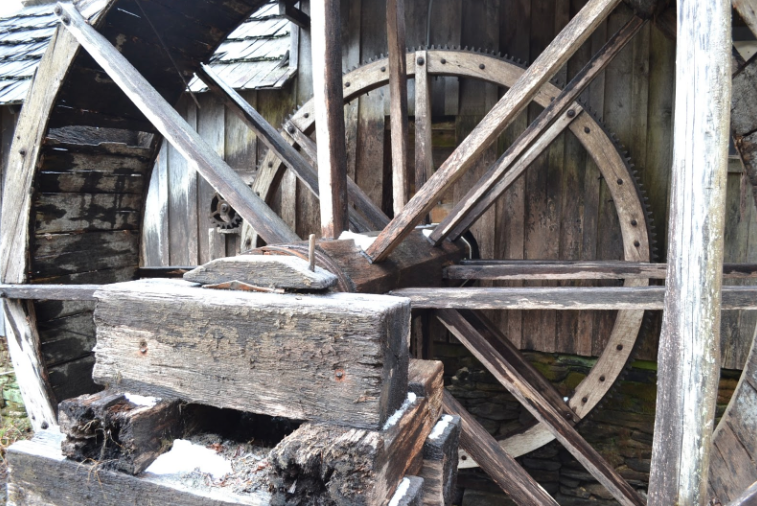When you're rebuilding what may the most famous mill in the National Park Service system, you don't just run down to Lowe's or Home Depot to get some 1x12s and 6x6s and a box of galvanized nails. For one thing, the kinds of wood you need and the dimensions you need them in won't be found even in most specialty lumberyards, where custom cuts can be arranged at a price that would raise the remaining hair on the frazzled heads of accountants at government agencies such as the U.S. Department of the Interior or development officers at private, non-profit groups dedicated to taking up the slack in parks across the country. Fortunately for this project, the Blue Ridge Parkway Foundation (brpfoundation.org), which provides a broad array of services, programs, funding and other support for the Parkway, committed to raising $65,000 to pay for the restoration project. The job includes dredging the millpond, reconstructing the waterwheel and repairing the damaged and clogged log flumes that collect the water to turn the wheel.
And one of the things that is particularly hard to find is the expertise to do this sort of historic preservation work. True, there are amazing craftsmen and women across the country with phenomenal skills in the workshop and in the field. But how often do you need to restore a waterwheel with complicated cast iron parts attached to custom-cut wooden pieces, first designed more than a century ago, remade during World War II, and occasionally redone in the decades since then? The last time the waterwheel at Mabry Mill was rebuilt was nearly two decades ago — 1995. Back then, the Historic Preservation Shop at Sandy Flats near the Cone Manor in Blowing Rock, N.C. had six people working there, including Larry Hampton, now retired from the Park Service, who did the dredging work a couple weeks ago at Mabry Millpond.
These days, due to budget cuts imposed by Washington, the staff of the Historic Preservation Shop is down to two: Steve Marnie and Jack Trivett. When they began planning how they would restore the waterwheel, they knew finding the right woods in the sizes they needed would be a big problem. At Mabry Mill, they knew they would need hemlock in certain dimensions to repair the log flumes that bring water to the wheel. But only one thing would do for the buckets and backing boards and face boards and other components of the wheel: "White oak — that's all we use," Marnie said one cold winter morning earlier this year as he showed me around the shop. Other kinds of oak are tough, but none is as weather resistent and none is as close-grained, and as watertight, as white oak.
Nor as hard to find. Trivett called all the lumberyards he knew about in search of white oak 15 inches wide. None had exactly what he needed, but he found a supplier in Spartanburg, S.C. that could supply some of the oak for the buckets on the waterwheel — basically two pieces in different dimensions, with differing angles of joints, that would be set into grooves on the basic structure of the existing waterwheel.
Over the winter they fabricated the new bucket parts at the Sandy Flats shop, and sawed out new curved facing pieces. To get the width of those curves just right, they fashioned two different woodworking jigs to cut the inner and outer curves on bandsaws.
They caught one break: the main axle, the spokes and the outer band of the wheel were in good shape. All were of white oak, and the Parkway workers would not have to replace those. But some of the heavy blocks holding up the wheel on the pond side of the mill were clearly deteriorating and would have to be replaced. Somehow Marnie and Trivett would have to find huge blocks of white oak, but that was another problem.
Where in the world do you find huge dimensions of white oak to hold the massive weight of a waterwheel that will be under stress, pressure and weight from hundreds of pounds of water cascading over the wheel while driving wide belts and iron gears and huge grinding stones and circular saw blades and lumber carriages? And how do you move it, shape it and deliver it?









